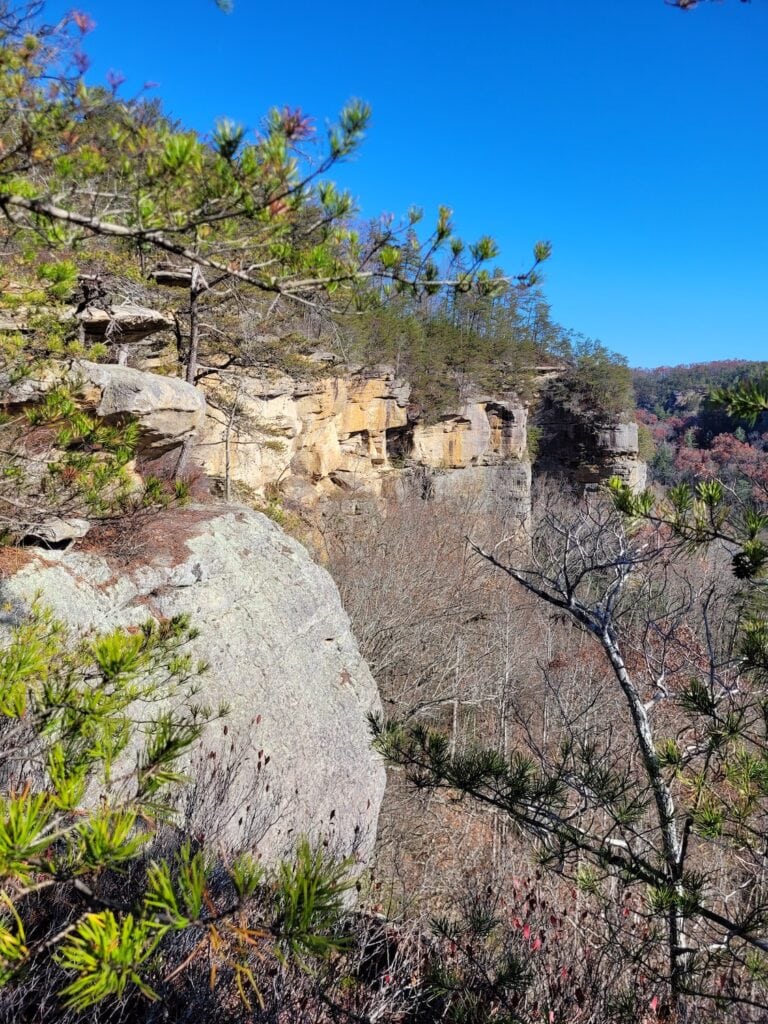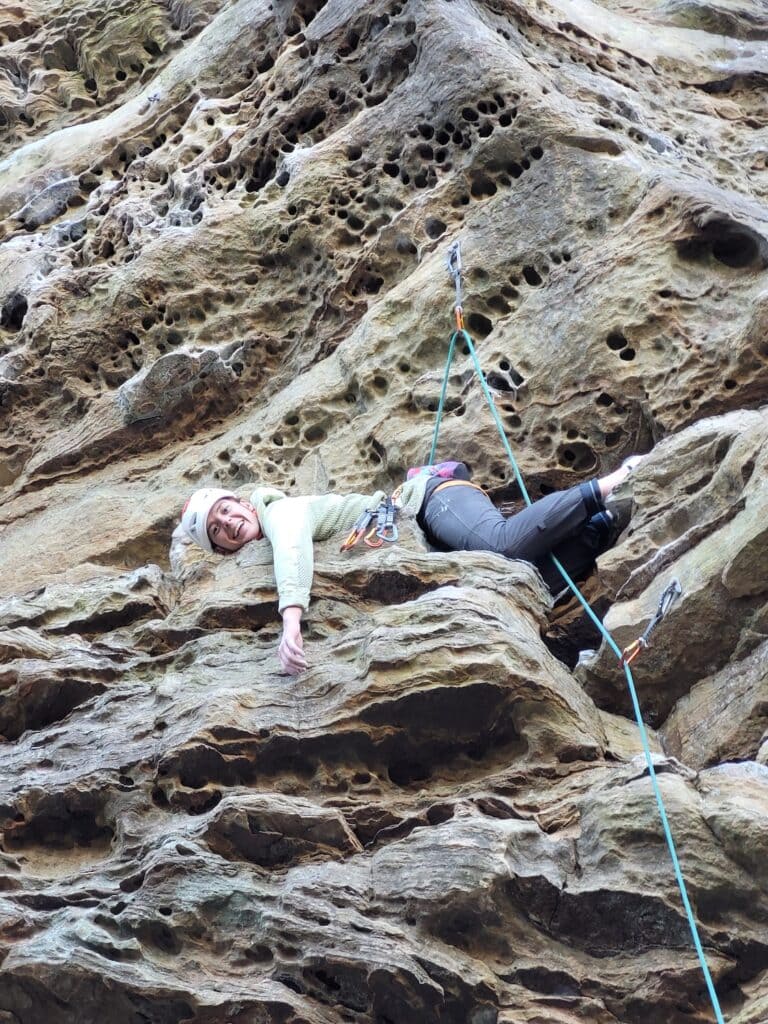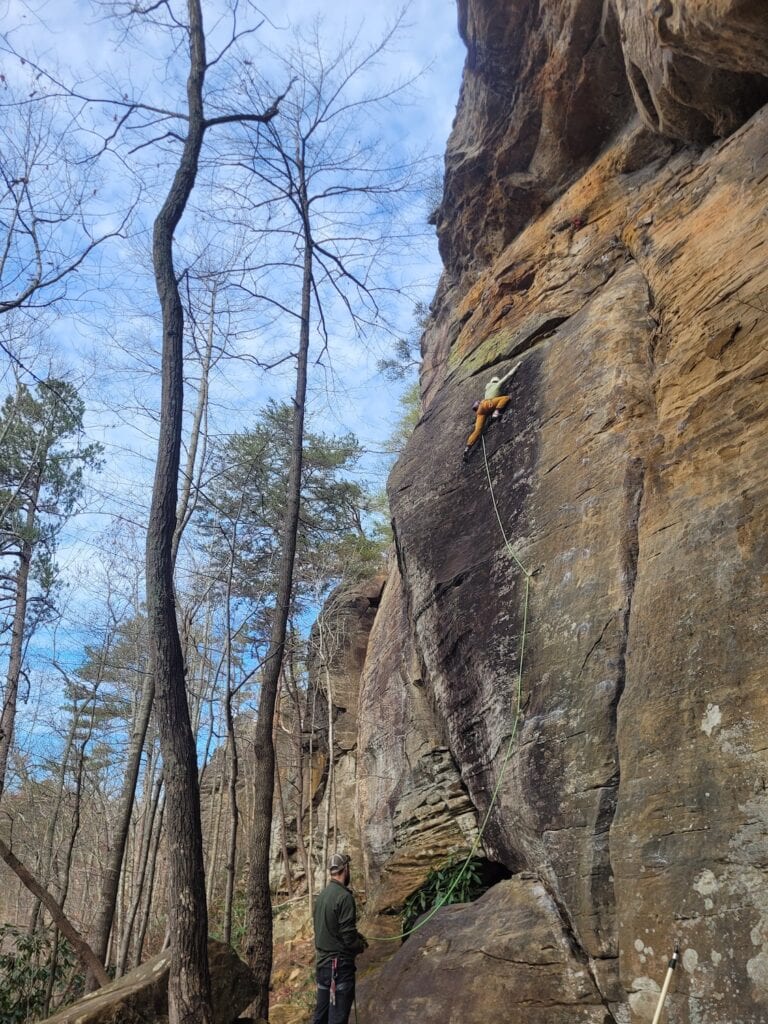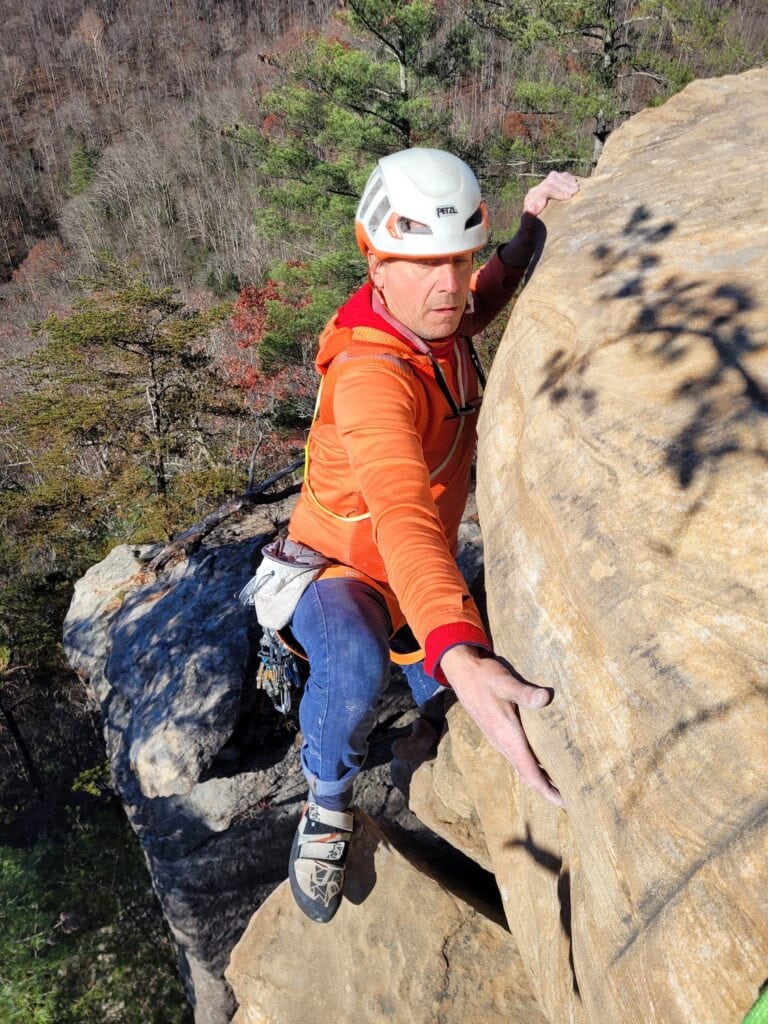10 Lessons Learned from Climbing in the Red River Gorge
Over the years, I’ve spent a lot of time climbing in the Red River Gorge of Kentucky. Each trip, I learn something new about the zone or the climbing kit I bring. After this most recent trip over Thanksgiving week, I decided to compile some of my most helpful nuggets of Red River wisdom.
I hope they help you enjoy an excellent climbing trip to one of North America’s best sandstone climbing areas.

1. Don’t Let the Forecast Turn You Around
The Red River Gorge (RRG) is known for its overhanging terrain. The steep angle of the terrain often permits you to climb in the rain. Some areas stay dry in light rain, and others will remain dry even while it’s dumping outside. Luckily, each of the Red’s guidebooks will tell you which crags stay dry.
In addition, the tops of many cliffs are capped with humungous overhangs, sometimes referred to as rock houses, that keep the climbable terrain underneath them dry for climbing.
So, unless it’s absolutely nuking outside, don’t let a rainy forecast ruin your plans. Instead, crack open a guidebook and look for the crags with an umbrella symbol signifying that they keep dry in bad weather.

2. Bring Your Trad Rack
The Gorge is an internationally renowned sport climbing destination. There is enough sandstone sport climbing scattered throughout the Gorge to keep you busy for multiple lifetimes. But I think you should bring your trad rack also.
The crack climbing in the RRG is incredible. The sandstone protects well, the jams are friendly to your skin, and the traditional climbing areas are consistently less crowded and more adventurous.
3. Wear Mud Boots
My favorite type of footwear for going rock climbing is approach shoes. However, not in the RRG. When I climb in the Red, I trade out my approach shoes for rubber boots. That’s because the approach trails are more muddy than they are rocky.
Robust rubber boots are waterproof and impermeable to mud. Plus, many models are insulated, so they keep your feet warm. And you can easily slip them on and off, which is convenient for the frequent shoe-changing that comes with climbing.

4. Don’t Forget the Stick Clip
The RRG is a modern sport climbing venue, meaning that many of the first bolts on sport climbs were intentionally installed high off the ground. That’s because the route developer intends for you to use a stick clip to protect the runout off the ground and mitigate the risk of a ground fall.
Fortunately, if you don’t have a stick clip or forget it at home, someone else in the area can probably lend you one. Or you can use any of the nearby stashed tree branches to fashion an improvised stick clip.
5. Eat a Pizza at Miguel’s
Second to the amazing rock climbing in the Red is the pizza at Miguel’s. Miguel’s Pizza Restaurant is the local stomping grounds (and campground) of rock climbers passing through the Red.
The food is good and fairly priced, and the venue is classic. Plus, Miguel’s has a gear shop if you need to buy something, and the campground is perfectly located for climbing any crag in the Gorge.

6. Park Up High, Hike Down Low (PMRP)
Many of the access roads for climbing in the RRG can be rough and riddled with tire-eating potholes, steep inclines, and washboard-like bumps. All of that is especially true for the Pendergass-Murrary Recreational Preserve, affectionately known by climbers as the PMRP.
How deep you drive your car down any of the access roads in the Red will depend on whether or not your vehicle has a decently high clearance and all-wheel drive (or 4×4).
Fortunately, if you are concerned about your car getting stuck, there are many options for parking up high or further out that avoid the worst of the tricky terrain. Parking further away means you have to hike more, but at least you can go home at night and not have your car towed out.

7. Summit a Tower or Pinnacle
Scattered throughout the northern reaches of the Red River Gorge are a collection of towers and pinnacles. For example, Raven Rock, Tower Rock, the Minas Tirith Pinnacle, and the Jewel Pinnacle.
All of these features host a wide selection of exciting and adventurous traditional climbing on sandstone cracks and corners. If you like the idea of trekking off into the bush to seek out a unique summit experience and cast your eyes over some amazing Red River Gorge vistas, then you need to climb a tower or pinnacle.
Topping out at the chains at one of the sport crags just does not compare.
8. Climb Quickly
Many of the climbing areas in the Red have steep overhanging terrain. This means that one of the biggest challenges to climbing in the RRG is surviving the pump long enough to reach the chains.
For many climbers, mitigating how pumped they get requires strategic resting while on route. However, unless you have the fitness to recover in steep terrain, resting on the route may only get you more pumped.

So, when you are new to the RRG style of climbing, it may be more advantageous to climb quickly rather than slowly and methodically.
This can be challenging because it leaves you less time for route reading. But so long as you make the right decisions (and climb with a little luck), you’ll notice that a faster climbing pace will set you up for success and allow you to send more routes before your forearms implode.
9. Use Your Thumbs
I’ve never climbed anywhere with such interesting climbing holds. In the Red, you get incut crimps, flat slopers, pinches, huecos, pockets, and more pockets. The variety of holds is actually astounding.
Some of the holds in the RRG are self-explanatory– you grab it and crimp it. Other holds are less intuitive. For these, you have to find the intricacies of the hold to use it in the best way possible.

Many times, this means using your thumb in some capacity. What I mean by that is that some holds in the Red offer the opportunity for a thumb catch. A thumb catch is a tiny edge, dish, or completely different thumb-sized pocket that allows you to incorporate your thumb with the rest of your fingers to get a better grip on a hold.
Sometimes, thumb catches are intuitive, like for obvious pinch features. Other times, secret thumb catches are tricky to find, but when you do, they improve the quality of the hold drastically.
10. Be Wary of the Chalked Holds
Due to the number of climbers visiting the Red year round and the steep overhangs, many of the climbing holds remain chalked at all times. Climbing on chalky routes can be helpful because the chalk provides you with hints about where to climb.
However, super chalky routes in the Red can also steer you in the wrong direction sometimes. That’s because many of the not-so-great holds get chalky throughout the process of finding the best hold.
As a result, in some areas on a route, you get multiple chalky options to choose from, some of which are not that good. This results in spending more time finding the best hold and getting more pumped. Or, climbing on the second or third-best options accidentally when you could be using a better hold, resulting in more pump.
So, follow your route-finding instincts, climb in your style, and listen to how your body wants to climb– don’t just blindly follow the chalk.

Nice article, my family and I spend thanksgiving week in the red every year. I totally agree with everything, not that my opinion is worth anything, but we do drive down in and up again to get as close as we can. lol and the pizza at Miguel’s is great. 👍